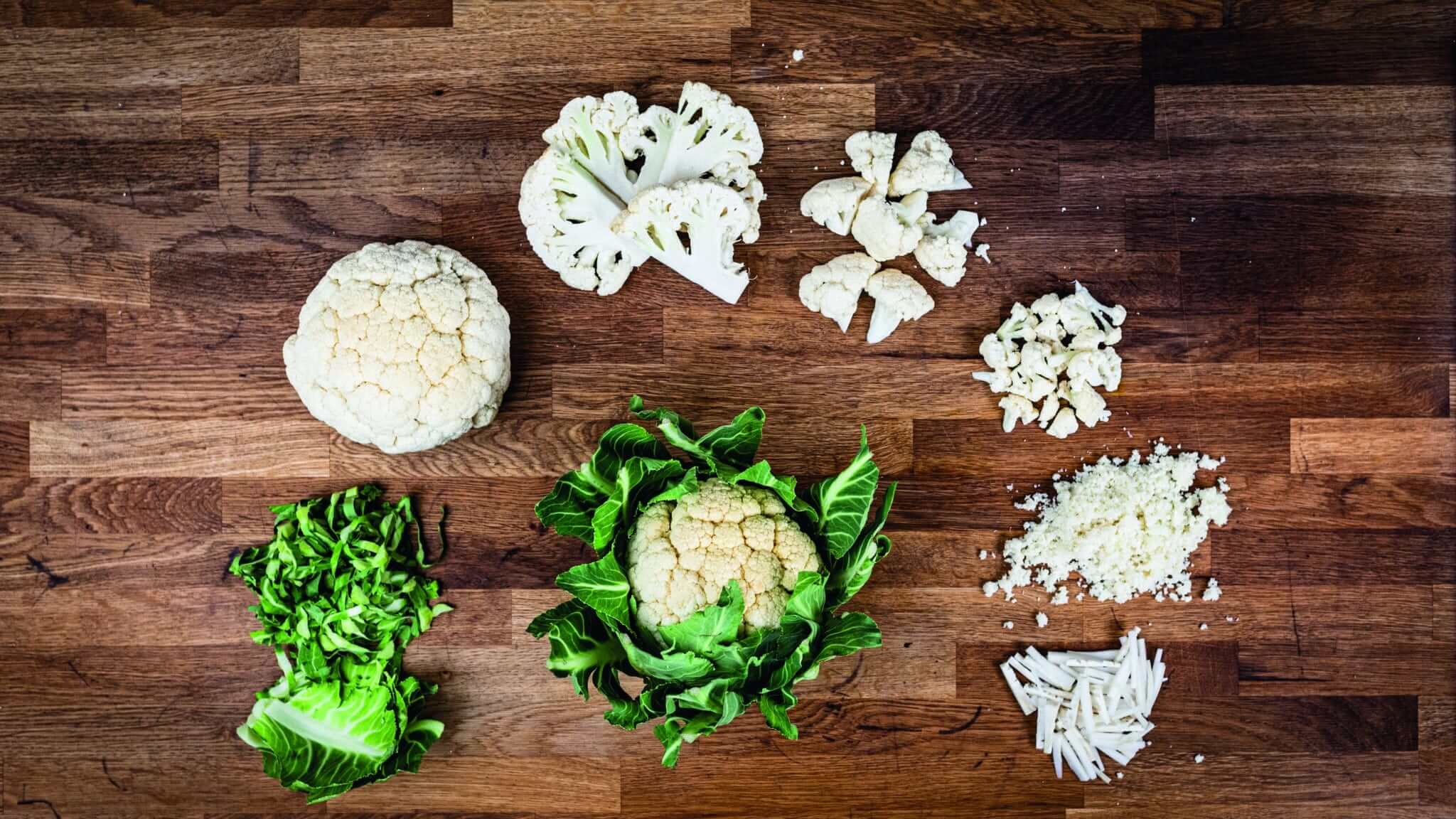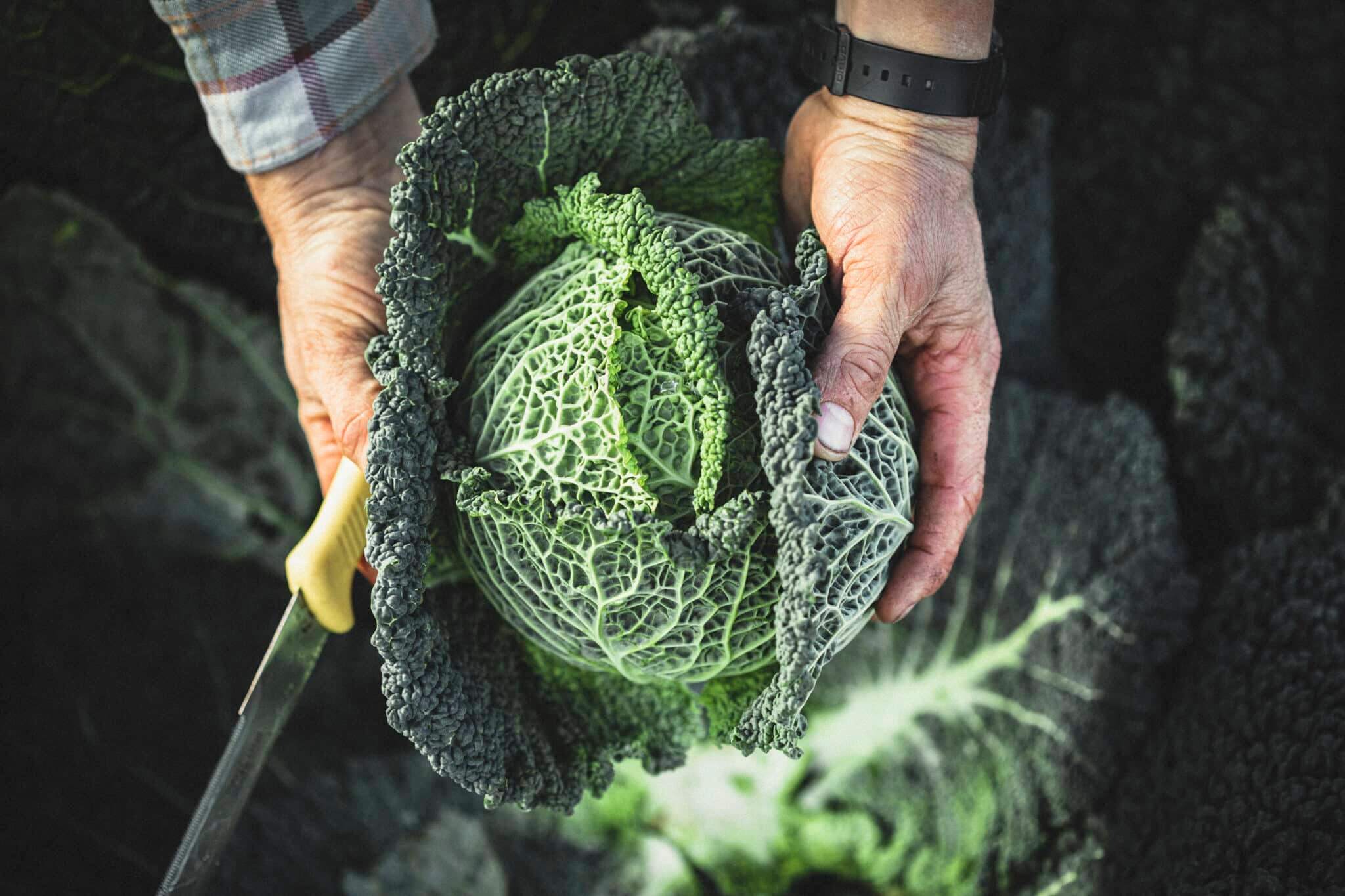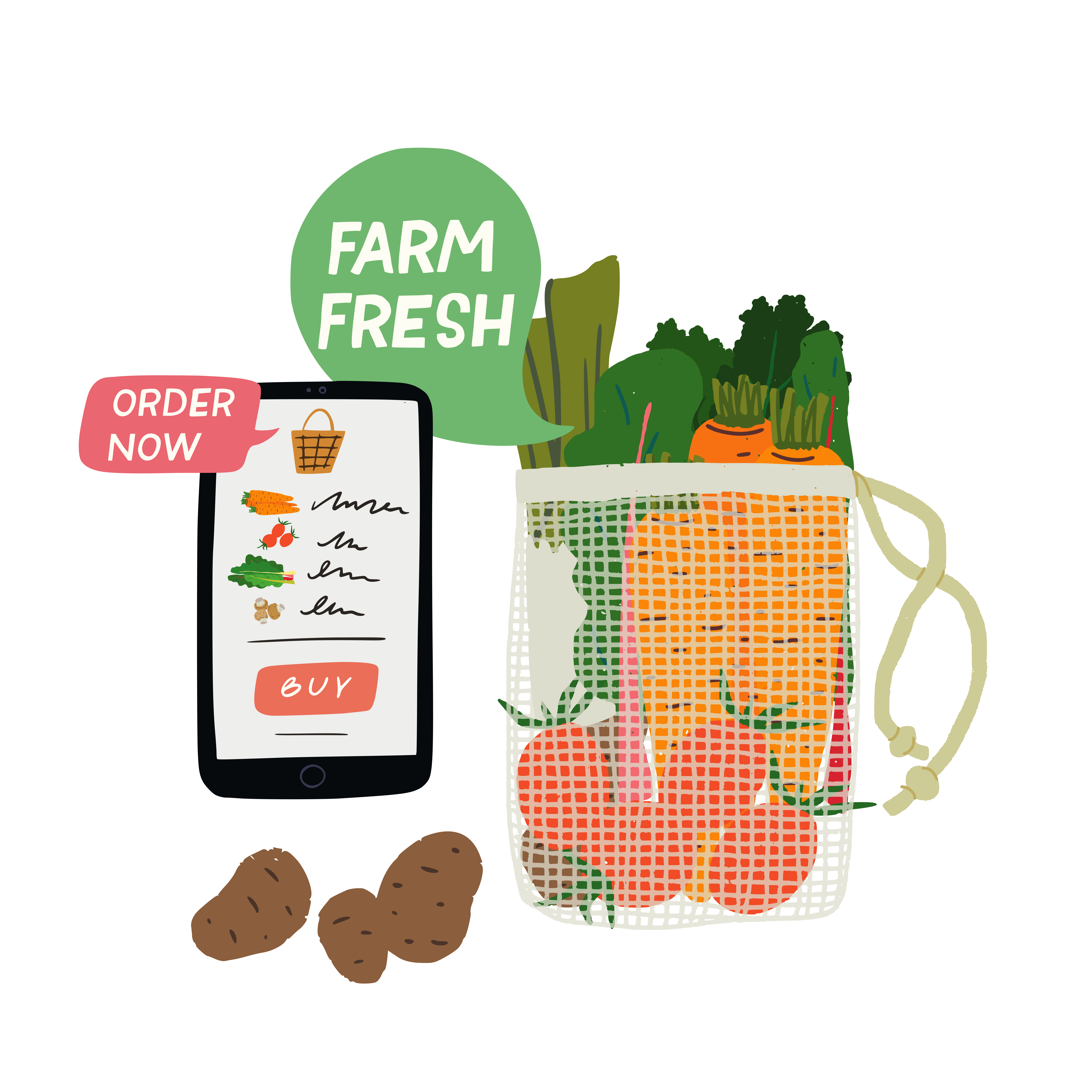We all have set ways and habits when it comes to preparing veg. They tend to fit neatly with the dishes we know and are comfortable with cooking, as well as the perceived limits to our chopping board skills. They can also reflect a food, restaurant and supermarket culture that, in the past, has prized certain parts of the plant and overlooked the merits of other; defining what we see as being worthy of cooking or destined for the compost bin. People are becoming much more aware of the importance and possibilities of cooking inventively with veg as well as being thrifty, sustainable and stylish at the same time.
A perfect time to break old habits, and you can begin with little more than a knife, peeler and chopping board. New cuts and techniques can open up ideas for dishes that were never on your radar, expanding the scope of your culinary adventures, slashing waste and adding a renewed value.
We’ll start with the cauliflower, from a spur of the brassica family prized for their edible florets (which are the beginnings of flower heads that would bolt, bloom and run to seed if left in the field) along with Romanesco, Purple sprouting broccoli and calabrese. The common misconception is that just the dense white florets (commonly referred to as curds) are worth eating, but the stalks and leaves are also delectable. It is just a matter of understanding the structure and anatomy to unlock all the potential cuts, slices and facets on offer. Here is our breakdown guide.
Eat the leaves
The tender protective leaves that cleave to the central curds are too often discarded. They can be steamed, boiled, fried or roasted alongside the florets – a particularly nice addition to a classic cauliflower cheese. Or shred them and use as you would with any other cabbage, kale or greens.
Whole head
Trimmed of the leaves and stem (both still usable) a cauliflower can be kept whole and cooked as an entire piece. Baked and basted with plenty of flavours and aromatics it makes a theatrical centre piece that can be served to the table and carved into slices.
Slices
You needn’t always trim them down into neat florets, you can be a bit more forthright and simply cleave them into thick slices instead. Marketed in recent years as cauliflower “steaks”, the key advantage of this cut is that it gives a flat face on both sides, resulting in more surface area for marinades and dressing, and better contact with a frying pan, roasting tray or griddle. Perfect for getting a golden colour and deeper, more complex flavour.
Large florets
The cut that most people are familiar with. Follow the natural division of the stalk to dissect the curds into individual florets. Good for boiling steaming and roasting. It is the kind of sturdy piece you’d like to find in a classic cauliflower cheese.
Small florets
A refinement whereby the florets are split further. A little more dexterity is needed with the knife, but you are rewarded with much more practical and bite-sized pieces that will fry, roast or braise swiftly. You can even salt and preserve them for the coming months in a chutney or piccalilli.
Rice
The use of cauliflower in place of rice or couscous has gained popularity in recent years as a low carb alternative. It may be the darling of dogmatic dieters, but it is also tasty, good for you and a great way to sneak some veg into the dinner of even the most stubborn eater. You chop, grate or pulse the florets until coarsely crumbed and the texture of rice or plump couscous. You can eat it raw, but it is better cooked in a little oil and stock until just tender; add whatever herbs or spicing you like to fit your dish.
The stalk
Instinct suggests that the stalk is best discarded as it looks gnarled and a little tough. However, a light trim or peel reveals a tender heart on par with the rest of the piece. Cut into slices and then chop into batons, they can be added to stir-fries or cooked alongside the florets. If cut finely enough, they’ll even add a distinctive cabbage-like crunch to a winter slaw.










I use grated cauliflower mixed with egg, butter, onions or almost anything other vegetable, to make a pizza base. Egg is fairly essential, but cheese works too. I do cook it a short while in the oven, and then put on the topping.